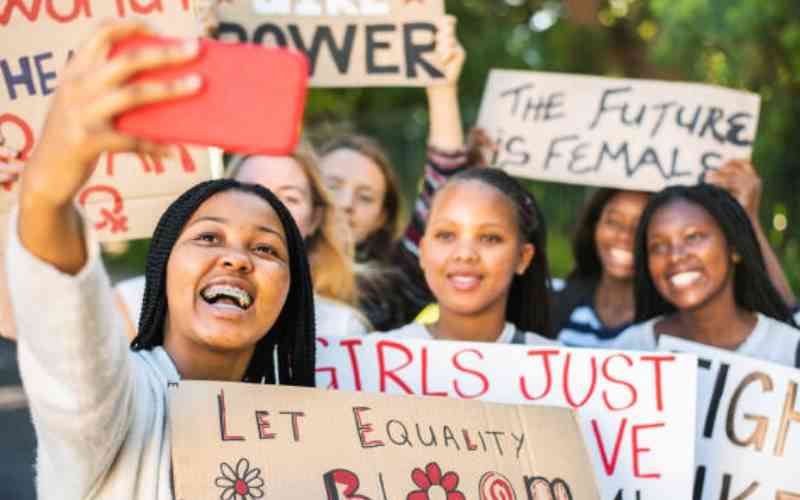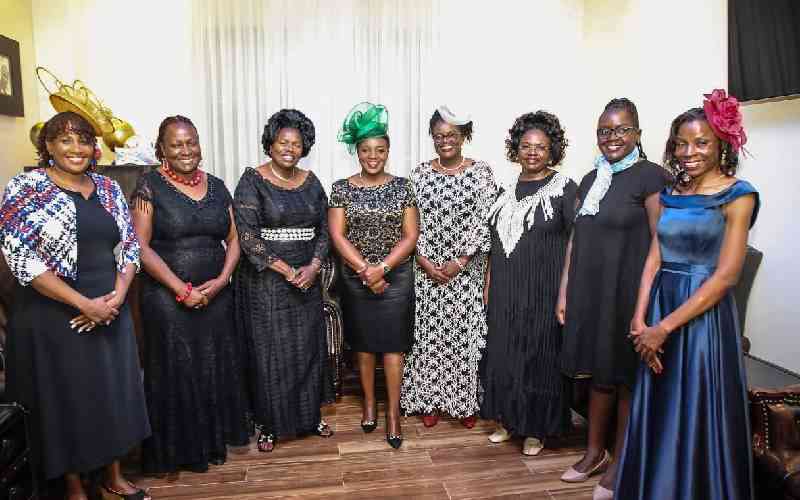The Constitution of Kenya 2010 recognises women, persons with disability, youth and ethnic minorities as special groups deserving constitutional protection.
More specifically, Article 81 (b), which refers to the general principles of the electoral system, provides that not more than two-thirds of the members of elective public bodies shall be of the same gender. Strictly speaking and in the Kenyan context, the foregoing could be deduced to mean that women should at a minimum form a third of the elected leaders.
The government is further obligated to develop and pass policies and laws, including affirmative action programmes, to address the past discrimination that women have faced, an obligation that the Government has demonstrated commitment in fulfilling. Whereas the Government has tried its best to ensure that the gender rule is implemented within the appointive bodies, this has not been easy for elective positions.
Policies on elective positions sound fine on paper but almost impractical in reality, owing to the fact that the posts are elective and unless women's participation in election is boosted, the tug-of-war between women and men in Parliament in seeking an amicable way of implementing the rule will persist.
Going by statistics, women's participation in the 2013 General Election remained considerably low in comparison with the constitutional threshold. Out of 237 candidates for the gubernatorial positions, only 19 were women. As such, no woman was elected senator or governor. Out of the elected 290 elected National Assembly members, just 5.5 per cent are women.
For the 1,450 ward representatives positions, only 88 (6 cent of the elected candidates) were women. Political representation of Kenyan women now stands at 15 per cent versus Rwanda's 56 per cent, South Africa's 42 per cent, Tanzania's 36 per cent and Uganda's 35 per cent.
Kenya's 15 per cent is an improvement from the previous 9.8 per cent representation in the 10th Parliament and the increased numbers can be greatly attributed to the reserved seats for the 47 Women Representatives.
Clearly, we are not there yet! Arguably, the poor performance of women in the elective positions can be attributed to three major factors: the electoral system, the Kenya's patriarchal culture and lack of solidarity among women. Kenyan elections require huge capital outlay, yet the processes of economic, cultural and political capital accumulation still favour men more than women, irrespective of men's ethnic, religious and class divides.
Progressively, however, it is highly likely this position will improve, given the women's take-up of education, businesses and leadership positions in the corporate world. In December 2012, the Supreme Court held that gender equity as an affirmative action right for women is progressive in nature and not an immediate realisation. It therefore gave parliament until August 27, 2015 to enact legislation on how the one third rule will be met in the 2017 General elections.
Though the decision eradicated a constitutional crisis, effectively the problem was postponed to the 11th Parliament, which is already locked in a tug-of war with the civil society groups and the Constitution Implementation Commission over the formula to ensure more women ascend to elective positions.
Several proposals have been advanced, among them: (i) Scrapping the 47 women representative seats and providing election of 100 women MPs through clustering of the current 290 constituencies, (ii) staggering the implementation of the gender rule through a bill to be tabled in Parliament, and (iii) creation of special seats necessary to ensure that no more than two thirds of the membership of Parliament and Senate are of the same gender after each election.
As Parliament rushes against time to enact the legislation, it is vital to consider the tax burden to be borne by the taxpayers and value added to the elective bodies in place.
 The Standard Group Plc is a
multi-media organization with investments in media platforms spanning newspaper
print operations, television, radio broadcasting, digital and online services. The
Standard Group is recognized as a leading multi-media house in Kenya with a key
influence in matters of national and international interest.
The Standard Group Plc is a
multi-media organization with investments in media platforms spanning newspaper
print operations, television, radio broadcasting, digital and online services. The
Standard Group is recognized as a leading multi-media house in Kenya with a key
influence in matters of national and international interest.
 The Standard Group Plc is a
multi-media organization with investments in media platforms spanning newspaper
print operations, television, radio broadcasting, digital and online services. The
Standard Group is recognized as a leading multi-media house in Kenya with a key
influence in matters of national and international interest.
The Standard Group Plc is a
multi-media organization with investments in media platforms spanning newspaper
print operations, television, radio broadcasting, digital and online services. The
Standard Group is recognized as a leading multi-media house in Kenya with a key
influence in matters of national and international interest.









